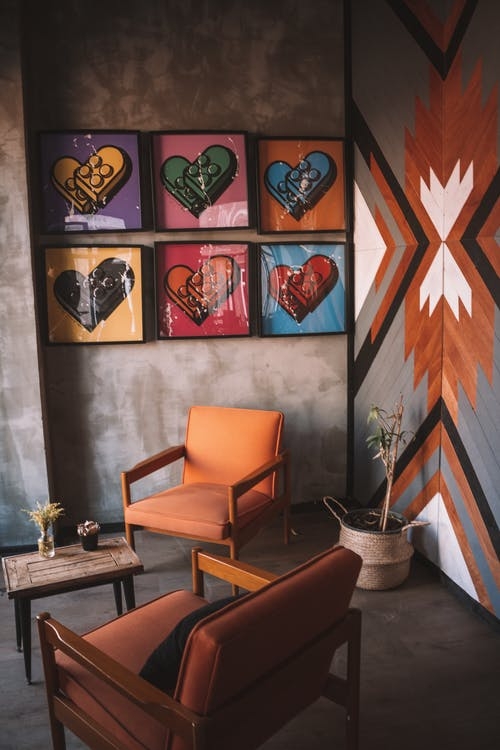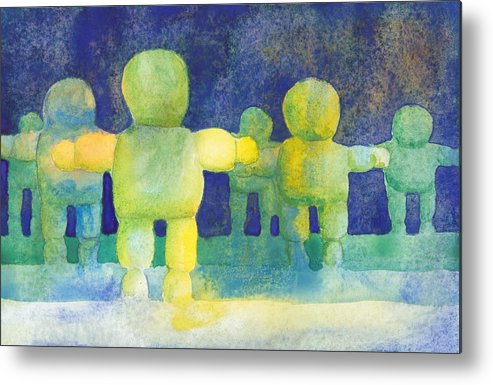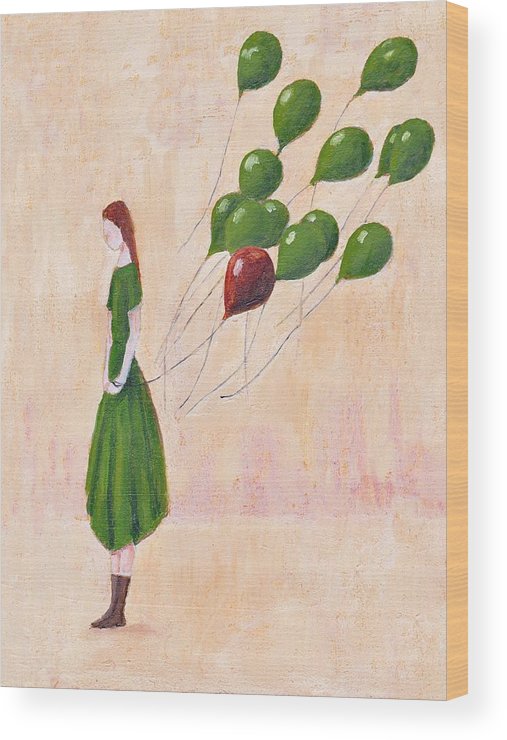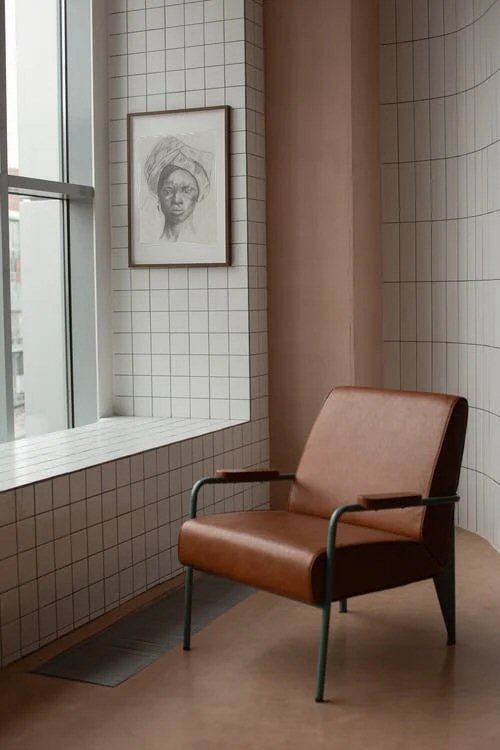
- by Tina Lewis
Wall Art for Living Rooms
Why have wall art in the living room?
When it comes to decorating your home the living room is one space that takes a large share of your creative energy. This isn’t surprising as it’s likely to be the room most on public display, it’s where you receive visitors, entertain guests and spend a lot of your leisure time. Most people want a living room that makes a definite statement and reflects their personality.
Once you’ve sorted out the furniture and soft furnishings you’ll be left with a room nicely furnished to your taste, and acres of blank walls! Now, whilst there’s certainly some beauty in a blank wall you can only stare at one for a few seconds before your eyes start roaming around, hungry for an object with a bit more visual interest.
This is where the wall art comes in.

Well chosen wall art will complete the décor of your living room, it can tie all the elements of the design together and help give the room a finished look.
Of course wall art can cover everything from sculptures, items from nature, and experimental 3d pieces but I’m only going to focus on paintings and art prints. They are far more accessible and anyway, I would wouldn’t I?!
So how do you go about choosing wall art for your living room?
Shopping for wall art can be fun but also very daunting, you’ll need to take colour, space, style and a host of other factors into consideration. Read on to learn about these and perhaps get some inspiration for your next decorating project from the accompanying photographs.
Colour Scheme
Should you go for bold colours or neutral when choosing wall art?
The main colour in your living room, which might even be that of the walls themselves, will set the scene for the colours of other items, if you’ve gone for a strong stand-out colour then take care not to choose artwork that would clash with it.

In contrast, a neutral scheme gives you plenty of leeway when it comes to the colour of items in the room, this is why it’s more popular than having strong colours on your walls. If you’ve got a neutral room then pretty much anything goes as far as artwork colour is concerned. Pair the colours in the prints and paintings with the flashes of colour you find in your soft furnishings.

Art Style
Do you have strong ideas about what style of art you want hanging on your walls? Lucky you because there are so many to choose from – modern pop, traditional landscape, still-life, portraits and more!
The daunting task of choosing can be made a lot easier if you focus on a theme, subject or particular era. For instance you could focus on prints of works from some of the Great Impressionist Masters.

If you don’t really like old traditional art then have a look at more modern creations. Abstract and minimalist styles are a very popular choice for interior decor. Try looking for art pieces that evoke the textures, shapes or patterns found in the rest of the room.

Print Substrate
These days art can be printed on a number of different wall art substrates (art print types). They are all attractive in their own way and will each have a particular effect on the feel of your space.
For that traditional look you can get stretched canvas prints or glazed and framed prints. But if you prefer a more modern feel then you can opt for metal or even acrylic art prints. The acrylics (and some of the metal prints) have a glossy finish that can really bring out the colours of a piece and act as an interesting comment point for your living room.
Some outlets also offer art prints on wood which can give a pleasing rustic feel to the art piece. And for something a bit different or to cover up a wall maybe you’d like to try art print tapestries.
Size and Placement
So you’ve chosen the art and are now contemplating your walls. Where to hang the art prints, what’s the most effective way to arrange them?
There are various rules that you might have heard about in the past:
- have the centre of the art piece at (average) eye level – about 57 inches above the ground. Treat a collection of prints as one unit for this
- if you’re hanging a print over a piece of furniture try not to choose one that’s wider than the furniture
- don’t clutter up the artwork by filling up all the available space, give people’s eyes a moment to rest!
But remember, these rules are not set in stone and it is often best to simply follow your instincts and go with whatever feels right for you.
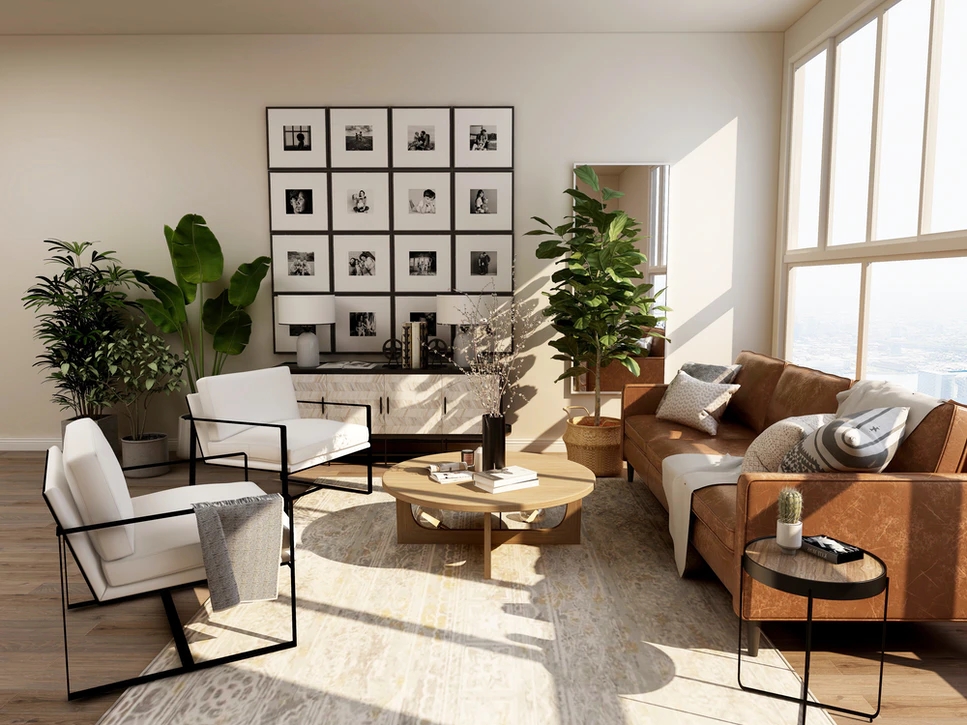
If you’ve got an especially large wall you might want to try making a feature of your favourite art piece. Often in this situation, the bigger the print the better. Alternatively you could try making a feature of a group of smaller art prints – arrange a number of them randomly, or in a grid pattern. If they are to be framed you might try contrasting frames or different matting styles.

A gallery wall provides a great opportunity for you to add your personality to the room. Use the space for paintings that inspire you, family portraits and other artwork that is special to you.
If your room is blessed with unique architectural features then you might want to place your art work in such a way that eyes are drawn to them. So, high up on the wall if the cornices are worth a mention, leaning a large print against a striking wall or overlapping paintings near a quirky detail.

Finally, if your living space has any interesting spots: feature windows, alcoves, the small nooks and crannies that you often find in old character houses, then use these to best effect and hang a favourite work of art that will make that corner of your living room even more special.
Wall Art for Living Rooms: a few more images
I hope you now have a better idea of how to go about choosing wall art for your living room, to finish off here are a few more living room images for you.

